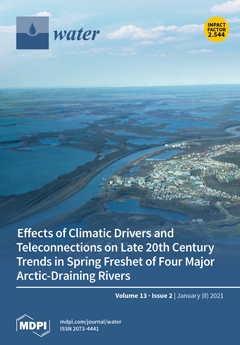Open AccessFeature PaperReview
A Critical Review of Methods for Analyzing Freshwater Eutrophication
by
Yan Zhang, Mingxuan Li, Jiefeng Dong, Hong Yang, Lukas Van Zwieten, Hui Lu, Aref Alshameri, Zihan Zhan, Xin Chen, Xueding Jiang, Weicheng Xu, Yanping Bao and Hailong Wang
Cited by 45 | Viewed by 9831
Abstract
Water eutrophication is a global environmental problem that poses serious threats to aquatic ecosystems and human health. The evaluation of eutrophication provides a theoretical basis and technical guidance for the management and rehabilitation of water ecosystems. In the last four decades, dozens of
[...] Read more.
Water eutrophication is a global environmental problem that poses serious threats to aquatic ecosystems and human health. The evaluation of eutrophication provides a theoretical basis and technical guidance for the management and rehabilitation of water ecosystems. In the last four decades, dozens of evaluation methods have been applied to freshwater eutrophication, but there is a clear need to optimize and standardize the most suitable methods. We have addressed this gap by presenting a systematic review of methodologies. Due to the diversity and complexity of water bodies, no single evaluation method was identified that would adequately represent eutrophication under all scenarios. We demonstrate that lakes can best be assessed using the trophic level index (TLI) method, reservoirs and wetlands the trophic state index (TSI) and fuzzy comprehensive evaluation (FCE) method, respectively, and rivers the FCE method or back propagation (BP) neural network methods. More recently applied methodologies including spectral imaging and 3-D mapping of water quality using underwater gliders allow greater resolution and can be effective in managing waterbodies to avoid future eutrophication. The aim of this review is to guide future studies on the most appropriate methods available for assessing and reporting water eutrophication.
Full article
►▼
Show Figures





